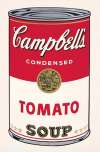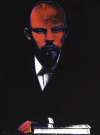Kimiko
Powers
In Kimiko Powers, commissioned by Kimiko’s husband in 1981, Andy Warhol proves he was no less attentive to his paying subjects, true to his belief that everybody deserves their 15 minutes of fame. Dressed in an elegant kimono with her hair arranged in a Japanese style, Kimiko Powers is portrayed as a classic beauty.
Andy Warhol Kimiko Powers For sale
Kimiko Powers Value (5 Years)
The Kimiko Powers series by Andy Warhol has maintained continued market appeal since its first auction appearance in 28/04/1998. With 25 total sales tracked, the series shows long-term growth and collector confidence. Peak hammer prices have reached £20,187 for top-performing works. Average annual growth over ten years is 4.75%. Factors that enhance value include condition, edition size and signature status. The series displays a measured range of prices linked to work characteristics, with a premium placed on rare-to-market examples.
Kimiko Powers Market value
Auction Results
| Artwork | Auction Date | Auction House | Return to Seller | Hammer Price | Buyer Paid |
|---|---|---|---|---|---|
 Kimiko (F. & S II. 237) Andy Warhol Signed Print | 26 Apr 2023 | Bukowskis, Online | £17,000 | £20,000 | £20,000 |
Sell Your Art
with Us
with Us
Join Our Network of Collectors. Buy, Sell and Track Demand
Meaning & Analysis
Following his notoriety as a celebrity portrait painter, Warhol soon began receiving commissions from wealthy patrons, including Kimiko Powers. John and Kimiko Powers had a large collection of Pop Art and in 1972 John commissioned Warhol to make a portrait of his wife. Warhol visited their apartment to take some polaroids of Kimiko from which to work, an episode she remembered vividly and recalled in a 2001 interview: “And he said to me ‘turn your face up. Turn your face to the side. Oh, it’s beautiful… oh gee that’s great.’ He took Polaroids, one after another. Afterwards when we were finished, he put them all over the floor and asked, ‘Which one do you like?’ I said, ‘You’re an artist, you decide.’” This marked the beginning of a long friendship between the artist and model, whom he would paint again.
By accepting commissions such as these Warhol was indulging his belief that everybody deserves their 15 minutes of fame. Dressed in an elegant kimono with her hair arranged in a Japanese style, Kimiko Powers is portrayed as a classic beauty. The traditional elements of the portrait are subverted however by the bright tones Warhol has used to turn Kimiko into an icon of Pop Art. Her face is flooded with magenta while her robe is made blue to blend in with the background except for a green stripe on the collar. Her lips are also tinged with blue, recalling earlier portraits of Marilyn and Elizabeth Taylor.
Though the original portrait was commissioned in 1972, the edition of 250 screen prints was only published in 1981, to raise funds for a visual arts programme sponsoring artists and exhibitions to which John Powers was affiliated. With this work Warhol demonstrates once again his mastery of screen printing as a medium. Traditionally associated with commercial printing, serigraphy – as the method is also known – was appealing to Warhol for its flatness and potential for large edition sizes. Though he had experimented with lithography and monoprinting before he soon found that screen printing offered the most attractive results, not least for its irregularity and what he described as its “quick and chancy” qualities. By overlaying colours and messing with the registration he produced a range of effects that soon became the hallmark of his work and Pop Art as a wider movement. Soon he was producing large numbers of prints, realising that “repetition adds up to reputation” and ensuring that his art was accessible to a wide audience, echoing the mass media from which he gathered most of his source material from in the first place. With this practice of repetition and appropriation Warhol soon became as famous as his subjects, turning himself into an icon of 20th century art.












